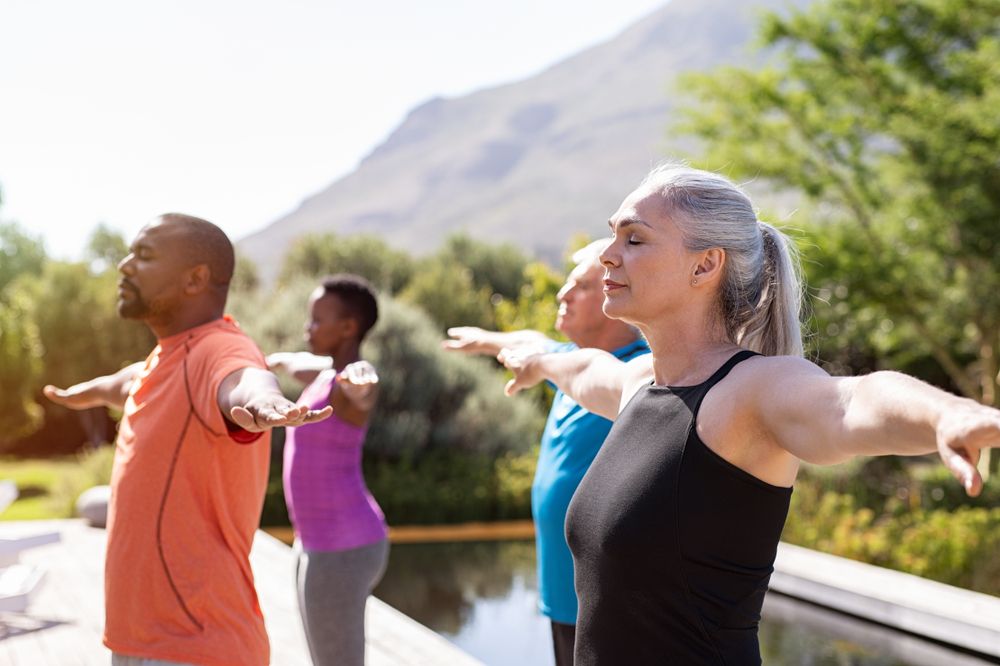
Does climbing a flight of stairs leave you more winded than it used to? Do you find yourself taking longer to recover from simple activities? You’re not alone. As someone with decades of experience studying both traditional medicine and holistic healing, I’ve come to understand that the way we breathe has a profound effect on how we age.
Breathing isn’t just about taking in oxygen—it’s a powerful tool for enhancing health, vitality, and longevity. Yet, many people unknowingly make critical breathing mistakes that can undermine their well-being, especially after age 50. The good news? By making a few simple adjustments, you can use your breath to boost energy, improve recovery, and increase resilience. Here are five common breathing mistakes and actionable solutions to help you thrive at any age.
Mouth Breathing

Breathing through your mouth might feel instinctive, but it bypasses your body's first line of defense: your nose. Nasal breathing produces nitric oxide (NO), a critical molecule that kills bacteria, combats pathogens, and improves oxygen delivery throughout your body. Mouth breathing, on the other hand, often results in poor oxygen uptake and over-breathing, which can lead to fatigue and heightened stress levels.
What to Do Instead:
- Practice Nasal Breathing: Make a conscious effort to breathe through your nose during daily activities like walking, working, or cooking.
- Consider Mouth Taping: Use medical-grade tape to gently encourage nasal breathing while you sleep (consult a doctor first if you have sleep apnea or other respiratory issues).
- Be Patient: If nasal breathing feels unfamiliar, give your body time to adapt. Gradual practice will help you build this healthier habit over time.
Switching to nasal breathing can significantly enhance your energy levels, stress management, and overall well-being.
Overbreathing

Breathing too much might seem counterintuitive, but overbreathing can increase oxidative stress, accelerating aging and straining the body. This often happens with shallow chest breathing or mouth breathing, both of which limit optimal gas exchange and disrupt your body’s balance.
What to Do Instead:
- Practice Diaphragmatic Breathing: Place one hand on your stomach and the other on your chest. Observe which hand moves more as you breathe naturally. If your chest rises higher, focus on expanding your belly with each inhale to engage your diaphragm.
- Slow Down Your Breathing: Inhale through your nose and exhale through your mouth, taking fewer, deeper breaths. Aim for a steady, relaxed rhythm to optimize oxygen exchange and reduce strain.
These simple adjustments can improve your breathing efficiency, reduce stress, and support long-term health and vitality.
Unmanaged Stress

Chronic stress often triggers a "fight or flight" response, leading to shallow, rapid breathing even when no immediate danger exists. Over time, this constant state of tension can drain your energy and take a toll on your overall health.
What to Do Instead:
- Practice Mindful Breathing: Incorporate exercises like the 4-2-8 technique—inhale for 4 seconds, hold for 2, and exhale for 8 seconds. This engages your parasympathetic nervous system, promoting relaxation and reducing stress.
- Start Your Day Calmly: Make mindful breathing a part of your morning routine to set a calm, centered tone for the day ahead.
Regular mindful breathing can help you manage stress, improve focus, and enhance your overall well-being.
Skipping a Cool-Down After Exercise

Exercise is vital for staying fit as we age, but abruptly stopping can leave you breathless and disrupt your breathing rhythm. This sudden shift may strain your body and hinder recovery.
What to Do Instead:
- Cool Down Gradually: After jogging, transition to a brisk walk, or after swimming, float or tread water to allow your body to ease back to a resting state.
- Practice Steady Nasal Breathing: During your cool-down, focus on deep, controlled breaths through your nose to stabilize your heart rate and regulate your respiration.
By incorporating a proper cool-down and mindful breathing, you can enhance recovery, reduce strain, and feel more refreshed after exercise.
Poor Posture
As we age, poor posture can compress the lungs and diaphragm, reducing breathing efficiency. This not only affects oxygen delivery but can also lead to back and neck pain over time.
What to Do Instead:
- Support Spinal Alignment: Invest in ergonomic chairs, supportive mattresses, or incorporate yoga into your routine to improve posture and maintain proper alignment.
- Practice a Posture-Boosting Exercise: Take a deep breath and hold it for 3–5 seconds, allowing your spine to naturally straighten. Relax your shoulders as you slowly exhale. Repeat this a few times daily, especially when sitting, to reinforce better posture.
Simple adjustments like these can enhance your breathing, reduce discomfort, and support overall well-being.
Final Thoughts

Breathing is one of the rare bodily functions we can consciously control, making it a powerful tool for enhancing health and longevity. By correcting these common mistakes, you can optimize your breathing and harness its full potential to support your well-being, especially after 50.

